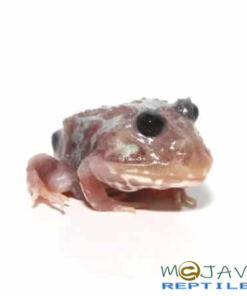The Very Best Reptile Enclosures: Exactly How to Develop the Ideal Environment
Producing the perfect habitat for reptiles is not simply concerning positioning them in a tank or room; it entails a thoughtful consideration of numerous elements that add to their overall health. From the dimension of the unit to the type of substrate made use of, every aspect plays a critical duty in giving an environment where your reptile can flourish. By comprehending the particular demands of your reptile varieties and implementing the best habitat setup, you can ensure their health and joy in captivity.
Picking the Right Unit Size
When picking an unit dimension for reptiles, it is crucial to consider their all-natural habits and space requirements to guarantee their health and wellness. When it comes to habitat space, different reptile species have differing needs. Arboreal types like chameleons or tree snakes require upright area for perching and climbing, while earthbound types such as bearded dragons or leopard geckos need even more floor room for discovering and thermoregulation. Water turtles like red-eared sliders necessitate units with both water and acreage for swimming and basking.
A basic general rule is to offer ample space for the reptile to display all-natural behaviors, such as basking, concealing, climbing, and foraging. rain frog for sale. Poor room can bring about tension, behavior problems, and also physical health issues. Rooms should also permit the placement of appropriate heating and lights aspects, along with ecological enrichment things like rocks, branches, and hides. By very carefully considering the details requirements of the reptile varieties in concern, proprietors can produce a suitable and enhancing habitat that promotes general well-being and motivates natural actions.
Setting Up Appropriate Heating Components
To make sure the health and health of reptiles in their units, it is vital to meticulously establish up proper burner. Reptiles are ectothermic animals, meaning they count on outside warmth resources to manage their body temperature level. When setting up home heating elements in a reptile unit, it is essential to think about the details temperature requirements of the types you are taking care of. Different reptiles have varying temperature level requires based upon their natural habitat, so it is necessary to research and comprehend these requirements.
One effective and typical burner for reptile rooms is a warmth lamp or ceramic warm emitter. These heat resources can be used to create a temperature slope within the enclosure, allowing reptiles to relocate between warmer and cooler areas as needed. Additionally, under-tank heating pads or warm floor coverings can be used to offer stomach warmth, which is especially advantageous for reptiles that need additional warmth to aid in digestion.
Checking the temperature within the room using a thermostat is important to guarantee that the burner are preserving the suitable temperature level variety for your reptile. Consistently examine and readjust the burner as needed to develop a comfortable and healthy setting for your scaly buddy.
Picking Appropriate Lights Components

Offering the Perfect Substratum
Choosing the proper substrate is vital for producing a comfy and appropriate setting for reptiles in their rooms. Some reptiles, such as desert-dwelling types like bearded dragons, flourish on substrates like calcium sand or reptile carpet, while others, like sphere pythons, prefer coconut husk or aspen bed linens to preserve humidity levels.
Furthermore, the size of the reptile need to also influence your choice of substratum, as hatchlings might require a better product to avoid intake. Stay clear of substratums that can cause impaction, such as loosened substratums like sand or gravel, particularly for reptiles known to consume their bed linen. Consistently cleaning and replacing the substratum is crucial to guarantee a clean and hygienic atmosphere for your reptile. By choosing the optimal substratum, you can add to the general health and health of your scaly companion.
Designing for Enrichment and Comfort
Considering the substrate's role in supplying a foundation for natural habits and maintaining an appropriate atmosphere, enhancing the reptile room with appropriate decorations is vital for both enrichment useful content and comfort. Decors such as branches, rocks, hideouts, and man-made plants not only create a much more aesthetically appealing habitat however also offer functional functions. Branches give climbing possibilities for arboreal species, while rocks can work as basking spots for heat. Hideouts use shelter and safety and security, reducing tension degrees for the reptile. Synthetic plants not only improve the appearances however also give hiding areas and enrichment by allowing the reptile to check out and connect with its atmosphere. When enhancing the enclosure, it is vital to take into consideration the reptile's species-specific demands and actions to create a room that promotes mental and physical health. By including a variety of decors that mimic the reptile's all-natural environment, proprietors can ensure their family pet's convenience and stimulate their all-natural impulses, ultimately causing a better and much healthier reptile.
Conclusion

Developing the excellent habitat for reptiles is not just regarding putting them in a tank or room; it includes a thoughtful factor to consider of different factors that add to their overall health.Choosing the appropriate substrate is important for developing a comfy and appropriate setting for reptiles in their rooms. Some reptiles, such as desert-dwelling varieties like bearded dragons, flourish on substrates like calcium sand or reptile carpet, while others, like ball pythons, choose coconut husk or aspen bedding to preserve humidity degrees.
By integrating a range of designs that resemble the reptile's natural habitat, owners can ensure their animal's comfort and promote their natural impulses, inevitably leading to a better and much healthier reptile.
In conclusion, creating the perfect habitat for reptiles involves selecting the proper this post room size, home heating aspects, lighting fixtures, substrate, and decorations.